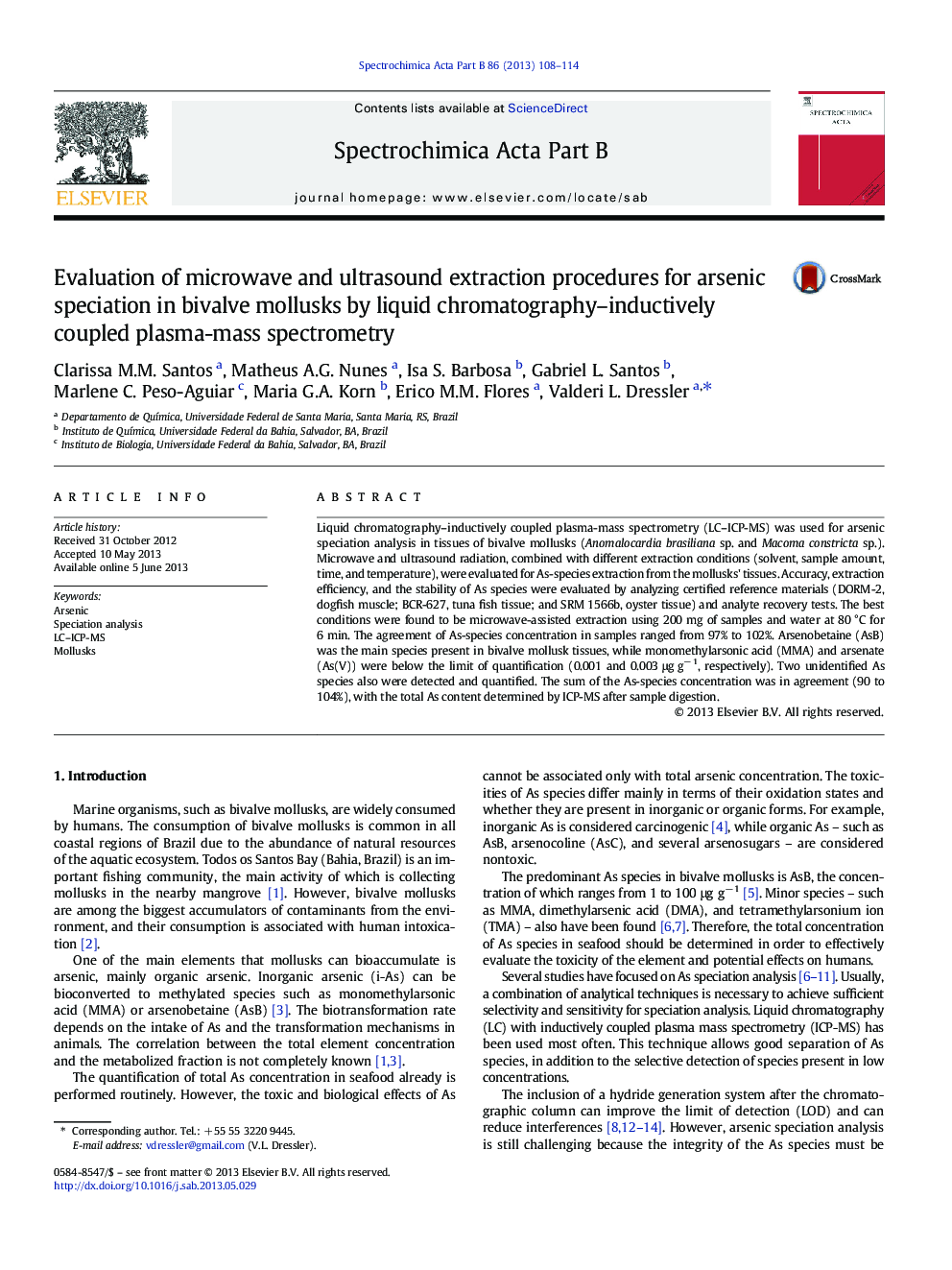| Article ID | Journal | Published Year | Pages | File Type |
|---|---|---|---|---|
| 1239856 | Spectrochimica Acta Part B: Atomic Spectroscopy | 2013 | 7 Pages |
•Method development for As speciation analysis by LC–ICP-MS•Evaluation of microwave and ultrasonic radiation for sample preparation•Investigation on As species content in mollusks
Liquid chromatography–inductively coupled plasma-mass spectrometry (LC–ICP-MS) was used for arsenic speciation analysis in tissues of bivalve mollusks (Anomalocardia brasiliana sp. and Macoma constricta sp.). Microwave and ultrasound radiation, combined with different extraction conditions (solvent, sample amount, time, and temperature), were evaluated for As-species extraction from the mollusks' tissues. Accuracy, extraction efficiency, and the stability of As species were evaluated by analyzing certified reference materials (DORM-2, dogfish muscle; BCR-627, tuna fish tissue; and SRM 1566b, oyster tissue) and analyte recovery tests. The best conditions were found to be microwave-assisted extraction using 200 mg of samples and water at 80 °C for 6 min. The agreement of As-species concentration in samples ranged from 97% to 102%. Arsenobetaine (AsB) was the main species present in bivalve mollusk tissues, while monomethylarsonic acid (MMA) and arsenate (As(V)) were below the limit of quantification (0.001 and 0.003 μg g− 1, respectively). Two unidentified As species also were detected and quantified. The sum of the As-species concentration was in agreement (90 to 104%), with the total As content determined by ICP-MS after sample digestion.
